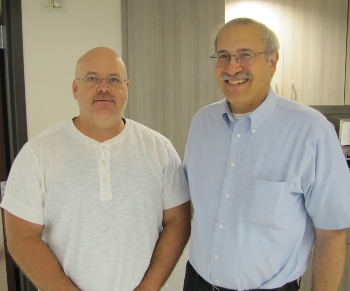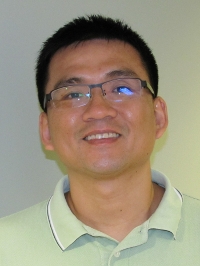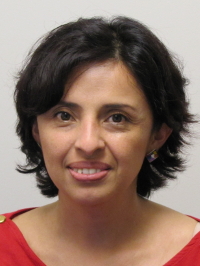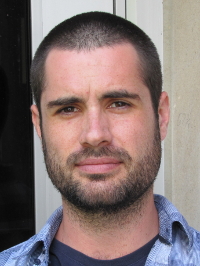Visitors at NIMBioS in 2014
Short-term visitors to NIMBioS are supported for periods up to one week to assist their efforts in carrying out research that conforms to the mission of NIMBioS to foster research at the interface between mathematics and biology.
Click here for a calendar listing NIMBioS visitors for the year.
Visitor/Sabbatical Archive
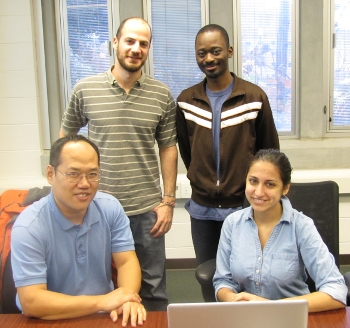
|
| (Clockwise from top L): Gelastopoulos, Coulibaly, Onal, Zhao |
Birce Onal (Biomedical Engineering, Ohio State Univ.);
Zana Coulibaly (Math & Statistics, Univ. Maryland-Baltimore Co);
Alexandros Gelastopoulos (Math, Boston Univ.)
Project Title: Propogation and synchrony in the sinoatrial node
Birce Onal, Zana Coulibaly, Alexandros Gelastopoulos are collaborating on a project begun with Xiaopeng Zhao at the 2014 CAMBAM-MBI-NIMBioS summer program on rhythms and oscillations.
Visit Dates: December 6-11, 2014
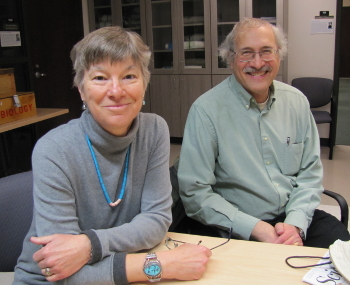 Laura Huenneke (Office of the Provost, Northern Arizona Univ.)
Laura Huenneke (Office of the Provost, Northern Arizona Univ.)
Laura Huenneke visited with NIMBioS postdocs and other researchers to discuss science and career paths.
Visit date: December 1, 2014
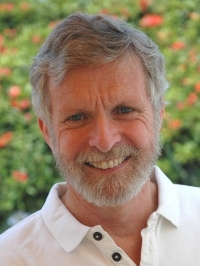 Robert Boyd (Biological Anthropology, Arizona State Univ.)
Robert Boyd (Biological Anthropology, Arizona State Univ.)
Robert Boyd visited with NIMBioS postdoctoral fellows and gave a seminar as a NIMBioS Postdoctoral Fellow Invited Distinguished Visitor.
Seminar topic: Does reciprocity explain human cooperation?
Visit date: November 18, 2014
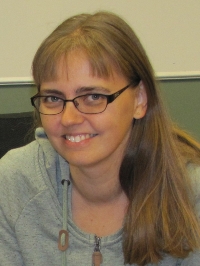 Hanna Kokko (Institute of Evolutionary Biology and Environmental Studies, Univ. of Zurich)
Hanna Kokko (Institute of Evolutionary Biology and Environmental Studies, Univ. of Zurich)
Hanna Kokko visited with NIMBioS postdoctoral fellows and gave a seminar as a NIMBioS Postdoctoral Fellow Invited Distinguished Visitor.
Seminar topic: Males exist: Does it matter?
Visit Dates: November 10-12, 2014
 Jane White (Mathematical Sciences, Univ. of Bath)
Jane White (Mathematical Sciences, Univ. of Bath)
Project Title: Controlling infection within heterogeneous populations
Jane White is collaborating with Suzanne Lenhart on a project to develop a generic deterministic model for infectious disease spread in a heterogeneous population where infection may be asymptomatic. The models will be parameterized using information on swine flu and Chlamydia.
Visit Dates: November 10-18, 2014
Summary report
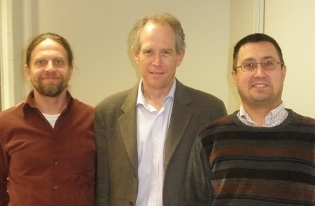 Miles Davenport (Centre for Vascular Research, Univ. New South Wales)
Miles Davenport (Centre for Vascular Research, Univ. New South Wales)
Project Title: Modeling immune response to HIV, malaria, and Mtb.
Miles Davenport (center) is collaborating with Michael Gilchrist (left) and Vitaly Ganusov (right) to discuss research on modeling immune responses and present a seminar on modeling malaria dynamics.
Seminar topic: Immune control of malaria: Modelling infection in patient cohorts and in mice
Visit Dates: November 7, 2014
 Gregers Jungersen (Technical Univ. of Denmark) and
Lovisa Sunesson (Technical Univ. of Denmark)
Gregers Jungersen (Technical Univ. of Denmark) and
Lovisa Sunesson (Technical Univ. of Denmark)
Gregers Jungersen (far right) and Lovisa Sunesson (center) are meeting with various individuals, including Shigetoshi Eda (far left) as a part of a self-supported visit to discuss the creation of an educational program at DTU for quantitative biology and disease modeling.
Visit Dates: October 13-14, 2014
 Peter Smouse (Ecology, Rutgers Univ.)
Peter Smouse (Ecology, Rutgers Univ.)
Peter Smouse visited with NIMBioS postdoctoral fellows and gave a seminar as a NIMBioS Postdoctoral Fellow Invited Distinguished Visitor.
Seminar topic: Correlated biotic and abiotic patterns in Embothrium coccineum: Can Embothrium survive Patagonian climate change?
Visit Dates: October 5-8, 2014
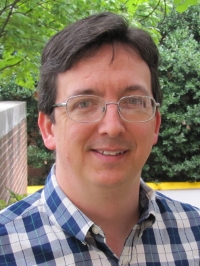 Dan Warren (Biology, Macquarie Univ.)
Dan Warren (Biology, Macquarie Univ.)
Project Title: Integrating evolutionary history into niche and distribution modeling
Dan Warren is collaborating with Nick Matzke on a project to develop an R package for integrating evolutionary history into niche and distribution modeling.
Visit Dates: September 7-17, 2014
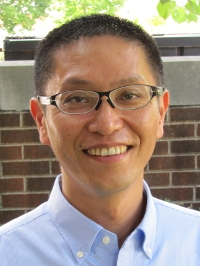 Katsuya Tanaka (Economics, Shiga Univ.)
Katsuya Tanaka (Economics, Shiga Univ.)
Project Title: Developing a cost-effective payment system for forest carbon sequestriation in Shiga prefecture of central Japan
Katsuya Tanaka is collaborating with Paul Armsworth to develop a mathematical model for determining a cost-effective payment system for forest carbon sequestration.
Visit Dates: September 7-16, 2014
Products
Presentation: Tanaka K. 11 September 2014. Payment mechanisms for managing ecosystem services in Southeast Asia. NIMBioS Seminar Series, NIMBioS, University of Tennessee, Knoxville, TN. [Online]
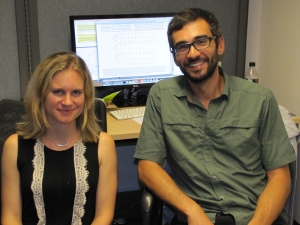
Suzanne O'Regan (Ecology, Univ. of Georgia) and Vasilis Dakos (Biology, Estacion Biologica de Donana, Sevilla, Spain)
Project Title: The onset of spatial synchrony as early warning of metapopulation collapse
Suzanne O'Regan and Vasilis Dakos are collaborating on a project to iInvestigate if the onset of spatial synchrony in an ecological system can be detected in advance and to generate theoretical predictions that can be tested experimentally.
Visit Dates: August 18-29, 2014
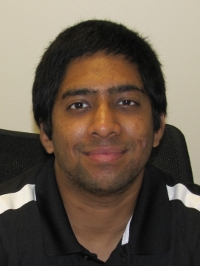 Abhishek Mallela (Mathematics and Statistics, Univ. of Missouri-Kansas City)
Abhishek Mallela (Mathematics and Statistics, Univ. of Missouri-Kansas City)
Project Title: Optimal timing of initiation of antiretroviral therapy in the presence of anti-TB treatment for HIV-TB co-infected individuals
Abhishek Mallela is collaborating with Suzanne Lenhart to develop optimal control models for HIV and TB co-infection.
Visit Dates: August 18-23, 2014
Summary report
Products
Publication: Mallela A, Lenhart S, Vaidya NK. 2016. HIV-TB Co-infection Treatment: Modeling and Optimal Control Theory Perspectives. Journal of Computational and Applied Mathematics.
Presentation: Mallela A, Lenhart S, Vaidya N. 2015 May 19. Optimal Treatment Strategies for HIV-TB Co-Infected Individuals. Topics in Feedback/Control/Optimization II, 2015 SIAM Conference on Applications of Dynamical Systems, Snowbird, UT
Presentation: Mallela A. 2015 January 13. Optimal treatment program for HIV-TB co-infected populations: A mathematical model. Joint Mathematics Meeting, San Antonio, TX.
Presentation: Mallela A. 2015 April 18. Ideal Treatments for HIV-TB Co-Infected Populations: Modeling and Optimal Control Theory Perspectives. Current Trends in Ecology and Disease Modeling, 1st Annual Meeting of SIAM Central States Section, Rolla, MO.
Brain Beckage (Plant Biology, Univ. of Vermont)
Project Title: Integrating human risk perception of global climate change into dynamic earth system models.
Brian Beckage is collaborating with Louis Gross and Forrest Hoffman on a project to couple a social model of human perception of climate change to a simple climate model.
Visit Dates: July 28-August 1, 2014
Tony Jhwueng (Statistics, Feng-Chia Univ.)
Project Title: Studying tolerance of dry condition for Helianthus annuus through a phylogenetic regression analysis.
Tony Jhwueng is collaborating with Brian O'Meara and Vasileios Maroulas on a phylogenetic methods and is also a participant in the NIMBioS Tutorial: Evolutionary Quantitative Genetics.
Visit Dates: July 28-August 17, 2014
Summary report
Products
Publication: Jhwueng DC, Maroulas V. 2016. Adaptive trait evolution in random environment. Journal of Applied Statistics. [Online]
Carolina Romo Gonzalez (Laboratorio de Bacteriologia Experimental, Instituto Nacional de Pediatria)
Project Title: Design of H. pylori epitopes: An immunoinformatic approach
Romo Gonzalez is collaborating with Clemente Aguilar to computationally obtain a set of MHC class II H. pylori epitopes.
Visit Dates: July 27 - August 1, 2014
Summary report
Will Morris (Applied Statistics and Forest Ecology, Univ. of Melbourne)
Project Title: Optimal allocation to addressing uncertainty in environmental project benefits
Will Morris is collaborating with Paul Armsworth on a project to build a model that would optimize allocation when environmental project benefits are uncertain.
Visit Dates: July 27 - August 8, 2014
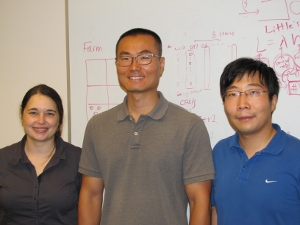 Chihoon Lee (Statistics, Colorado State Univ.)
Chihoon Lee (Statistics, Colorado State Univ.)
Project Title: Fitting cross-sectional epidemiological data to transmission models.
Chihoon Lee (center) is collaborating with Cristina Lanzas (left) and Shi Chen (right) on a project to investigate statistical and probabilistic approaches to fit epidemiological cross-sectional data to stochastic transmission models.
Visit Dates: July 23-27, 2014
Summary report
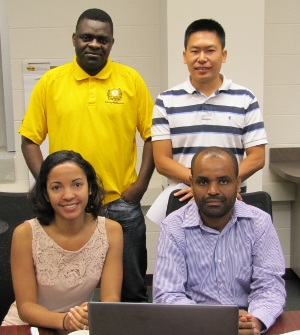
|
| (Clockwise from top L): Ngonghala, Zhao, Mohammed-Awel, Prosper |
Calistus Ngonghala (Global Health and Social Medicine, Harvard Medical School); Olivia Prosper (Mathematics, Dartmouth); and Ruijun Zhao (Mathematics, Minnesota State Univ., Mankato)
Project Title: Investigating the impacts of Insecticide-treated nets on malaria control
These visitors are collaborating with Suzanne Lenhart, Jemal Mohammed-Awel and Eric Numfor to use mathematical models to study the effects of changes in mosquito behavior, human behavior, decay in insecticide-treated nets efficacy, and imperfect vaccines on malaria control.
Visit Dates: Ngonghala and Prosper, July 21-25; Zhao, July 24-29, 2014
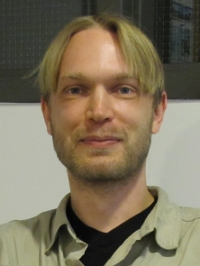 Ben Johannes (Institute for Cognitive and Evolutionary Anthropology)
Ben Johannes (Institute for Cognitive and Evolutionary Anthropology)
Project Title: Group cohesion and group conflict: linking models and empirical data
Ben Johannes is collaborating with Sergey Gavrilets on a project to refine an agent-based evolutionary model to investigate the trade-offs between in-group cohesion and out-group conflict.
Visit Dates: June 9-13, 2014
Summary report
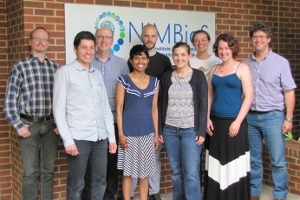
|
| L to R: Petrovskii, Dambros, Bullock, Amarasekare, Machac, Lawing, Shea, Teller, Lewis |
Priyanga Amarasekare (Biology, UCLA); James Bullock (Biology, CEH Oxford, UK); Cristian Dambros (Biology, Univ. of Vermont); Michelle Lawing (Ecosystem Science and Management, Texas A&M Univ.); Mark Lewis (Math, Univ. of Alberta, Canada); Antonin Machac (Biology, SUNY Stonybrook); Sergei Petrovskii (Math, Univ. of Leichester, UK); Katriona Shea (Biology, Penn State); and Brittany Teller (Biology, Penn State)
Project Title: Conservation in context: Combining biogeography and species traits to mechanistically model population spread under climate change
Visit Dates: June 8-11, 2014
Summary report
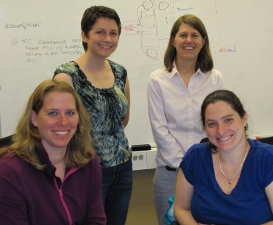
|
| (Clockwise from top L): Day, Hines, Reynolds, and Powell |
Stephanie Hines (Battelle Memorial Institute); Megan Powell (Mathematics, Univ. of St. Francis); and Angela Reynolds (Mathematics, Virginia Commonwealth Univ.)
Project Title: Development and analysis of appropriate mathematical models for understanding low dose anthrax exposure in vivo and in vitro
These visitors are collaborating with Judy Day for this project.
Visit Dates: June 2-4, 2014
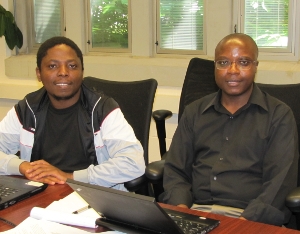 Tinevimbo Shiri (Physics, Ryerson Univ.)
Tinevimbo Shiri (Physics, Ryerson Univ.)
Project Title: Predicting bacteria shedding patterns of cattle with Johne's Disease
Tinevimbo Shiri (right) is collaborating with Gesham Magombedze (left) on a project to develop mathematical models of cattle immune responses to MAP infection.
Visit Dates: May 25-June 7, 2014
Summary report
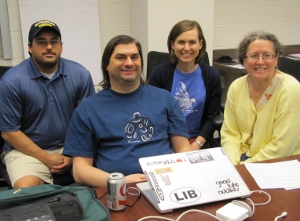
|
|
(L to R): Salinas, Christley, Neilan, and Lenhart. Not pictured: Oremland |
Rachael Neilan (Mathematics, Duquesne Univ.); Matt Oremland (Mathematics, Virginia Tech); René Salinas (Mathematical Science, Appalachian State Univ.); and Scott Christley (Mathematics, Univ. of Chicago)
Project Title: Optimal control methods for age-based models
Neilan, Oremland, Salinas and Christley are collaborating on a project with Suzanne Lenhart to develop optimal control approaches for agent-based models.
Visit Dates: May 18-21, 2014
Summary report
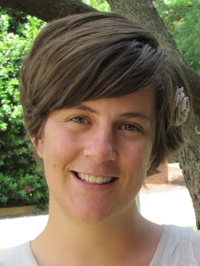 Angela Peace (Mathematics, Arizona State Univ.)
Angela Peace (Mathematics, Arizona State Univ.)
Project Title: Stoichiometric food web models: How food quality affects population structures
Angela Peace is collaborating with Louis Gross on a project to investigate the formulation of stoichiometric food web models of three trophic levels; planktonic algae, zooplankton, and zooplanktivorous fish, using two currencies; carbon and phosphorus.
Visit Dates: May 13-16, 2014
Summary report
 Fabiola Soto-Trejo (Biological Sciences, Universidad Nacional Autonoma de Mexico)
Fabiola Soto-Trejo (Biological Sciences, Universidad Nacional Autonoma de Mexico)
Project Title: Probabilistic inference of the biogeographic history of Florestina (Asteraceae, Bahieae)
Fabiola Soto-Trejo (center) is collaborating with Nick Matzke (left) and Katie Massana, UTK EEB, (right) on a project to conduct biogeographical analyses of the genus Florestina using BioGeoBEARS software.
Visit Dates: May 12-16, 2014
Publication:
Soto-Trejo F, Matzke NJ, Schilling EE, Massana KA, Oyama K, Lira R, Dávila P. 2017. Historical biogeography of Florestina (Asteraceae: Bahieae) of dry environments in Mexico: evaluating models and uncertainty in low-diversity clades. Botanical Journal of the Linnean Society 185(4):497–510. [Online]
 Pawel Gorecki (Institute of Informatics, Univ. of Warsaw) and
Oliver Eulenstein (Computer Science, Iowa State Univ.)
Pawel Gorecki (Institute of Informatics, Univ. of Warsaw) and
Oliver Eulenstein (Computer Science, Iowa State Univ.)
Project Title: Mathematical properties of reconciling discordant gene trees
Pawel Gorecki (left) and Oliver Eulenstein (right) are collaborating on a project begun during the Gene Tree/Species Tree Reconciliation Working Group to study the mathematical properties and distributions of reconciliation costs.
Visit Dates: May 11-25, 2014
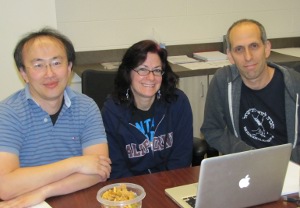
|
| L to R: Yu Shiu, Sara Waller, Arik Kershenbaum |
Yu Shiu (Bioacoustic Research Program, Cornell Univ.) and Sara Waller (Philosophy, Montana State Univ.)
Project Title: Social Predator Vocalization Project: Recording and Analysis
Yu Shiu and Sara Waller are collaborating on a social predator vocalization project with Arik Kershenbaum and Todd Freeberg.
Visit Dates: Shiu, April 30-May 2, 2014; Waller, April 30-May 15, 2014
Publication:
Kershenbaum A, Root-Gutteridge H, Habib B, Koler-Matznick J, Mitchell B, Palacios V, Waller S.
March 2016. Root-disentangling canid howls across
multiple species and subspecies: Structure in a complex communication
channel. Behavioural Processes 124:149-157.
[Online]
Summary report
 Leah Edelstein-Keshet (Mathematics, Univ. of British Columbia)
Leah Edelstein-Keshet (Mathematics, Univ. of British Columbia)
Leah Edelstein-Keshet visited with NIMBioS postdoctoral fellows and gave a seminar
as a NIMBioS Postdoctoral Fellow Invited Distinguished Visitor.
Seminar topic: Modeling Chemical Patterns in Cell Motility
Visit date: April 30, 2014
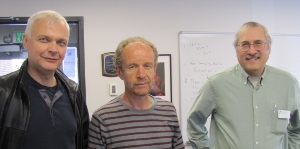
|
| L to R: Sergey Gavrilets, Eugene Koonin, Louis Gross |
Eugene Koonin (National Center for Biotechnology Information, National Library of Medicine, National Institutes of Health)
Eugene Koonin visited with NIMBioS postdoctoral fellows and gave a seminar as a NIMBioS Postdoctoral Fellow Invited Distinguished Visitor.
Visit Dates: March 25-27, 2014
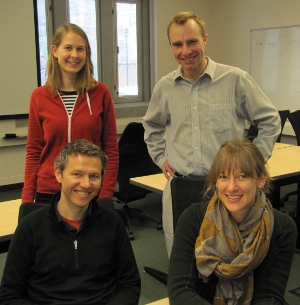 Carolyn Ayers (Population Biology. Ecology and Evolution, Emory Univ.); Heather Briggs, Environmental Studies, UC Santa Cruz; and Berry Brosi (Environmental Science, Emory Univ.)
Carolyn Ayers (Population Biology. Ecology and Evolution, Emory Univ.); Heather Briggs, Environmental Studies, UC Santa Cruz; and Berry Brosi (Environmental Science, Emory Univ.)
Project Title: Robustness of quantitative plant-pollinator networks
Ayers, Briggs and Brosi are collaborating on a project with Paul Armsworth to investigate mathematical approaches for pollinator ecology and biodiversity and ecosystem functioning.
Back row, L to R: Carolyn Ayers, Paul Armsworth. Front row, L to R: Berry Brosi, Heather Briggs
Visit Dates: March 3-5, 2014
 Elise Filotas (Science and Technology, Université du Québec); Patrick James (Biological Sciences, Université de Montréal); Vlastimil Krivan (Theoretical Ecology, Biology Research Center Academy of Sciences of the Czech Republic); and Anupam Priyadarshi (Biosystematics and Ecology, Institute of Entomology, Czech Republic)
Elise Filotas (Science and Technology, Université du Québec); Patrick James (Biological Sciences, Université de Montréal); Vlastimil Krivan (Theoretical Ecology, Biology Research Center Academy of Sciences of the Czech Republic); and Anupam Priyadarshi (Biosystematics and Ecology, Institute of Entomology, Czech Republic)
Project Title: Trophic-interactions and diversity-stability relationships in insect outbreak systems
Back row, L to R: Patrick James, Vlastimil Krivan. Front row, L to R: Anupam Priyadarshi and Elise Filotas
Visit Dates: March 3-6, 2014
Products
Publication: Jiang J, Moore JAM, Priyadarshi A, Classen AT. In preparation (2015). Resource mediated plant-mycorrhizal interactions confers coexistence of plants.
Publication: Krivan V, Priyadarshi A. 2015. L-shaped prey isocline in the Gause predator-prey experiments with a prey refuge. Journal of Theoretical Biology, 370(2015): 21-26. [Online]
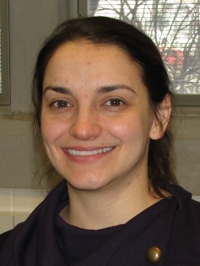 Nicole Mideo (Ecology & Evolutionary Biology, Univ. of Toronto)
Nicole Mideo (Ecology & Evolutionary Biology, Univ. of Toronto)
Project Title: What drives synchronicity in malaria infections?
Nicole Mideo is collaborating with Judy Day and Ed LeGrand to answer the question what drives synchronicity in malaria infections.
Visit Dates: February 26-31, 2014
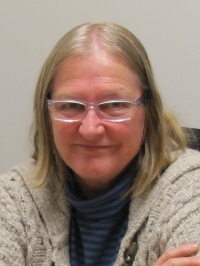 Kay Holekamp (Zoology, Michigan State Univ.)
Kay Holekamp (Zoology, Michigan State Univ.)
Project Title: Modeling the consequences of social network dynamics in the spotted hyena
Kay Holekamp is collaborating with Amiyaal Ilany on a project to describe the factors affecting social network dynamics in the spotted hyena and to identify the consequences of these dynamics in terms of individual life history and fitness.
Visit Dates: February 12-19, 2014
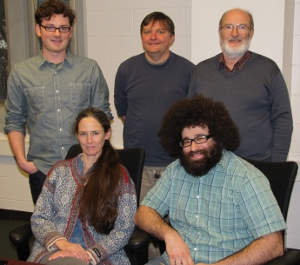 Roger Cousens (Resource Mgmt & Geography, Univ. Melbourne);
Yaniv Brandvain (Plant Biology, Univ. Minnesota);
Kathleen Donohue (Biology, Duke Univ.);
Allan Strand (Biology, College of Charleston);
Charles Willis (Center for the Environment, Harvard Univ.)
Roger Cousens (Resource Mgmt & Geography, Univ. Melbourne);
Yaniv Brandvain (Plant Biology, Univ. Minnesota);
Kathleen Donohue (Biology, Duke Univ.);
Allan Strand (Biology, College of Charleston);
Charles Willis (Center for the Environment, Harvard Univ.)
Project Title: Population-genetic and genomic approaches for inferring species invasions and range expansion
Back row, L to R: Charles Willis, Allan Strand, Roger Cousens. Front row, L to R: Kathleen Donohue, Yaniv Brandvain. Not pictured: collaborator Sean Hoban, NIMBioS postdoctoral fellow.
Visit Dates: February 5-7, 2014
 Anupam Priyadarshi* (Biosystematics and Ecology, Institute of Entomology, Czech Republic)
Anupam Priyadarshi* (Biosystematics and Ecology, Institute of Entomology, Czech Republic)
Project Title: Predator preference in tri-trophic interactions andthe effect of dispersal on apparent competition
Anupam Priyadarshi is developing a mathematical model that describes the spatial and temporal processes involved in irruptive forest insect outbreaks.
Visit Dates: February 2 - July 31, 2014
 Doug Begg (Veterinary Science, Univ. Sydney)
Doug Begg (Veterinary Science, Univ. Sydney)
Project Title: Immunity to infectious diseases
Doug Begg (center) is collaborating with Shigetoshi Eda (far right), Vitaly Ganusov (far left) and Gesham Magombedze (not pictured) to discuss mathematical modeling of MAP infection in ruminants.
Visit Dates: February 1-4, 2014
 Ariel Cintron-Arias (Mathematics and Statistics, East Tennessee State Univ.)
Ariel Cintron-Arias (Mathematics and Statistics, East Tennessee State Univ.)
Project Title: Mathematical modeling of hepatitis B virus infection with therapy
Ariel Cintron-Arias (right) is collaborating with Jon Forde (center) and Suzanne Lenhart (left) to explore a mathematical model of the dynamics of hepatitis B virus infection that accounts for therapy.
Visit Dates: January 21 - February 1, 2014
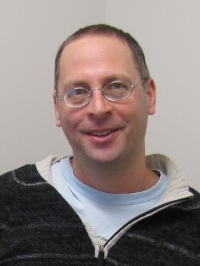 Sivan Leviyang (Mathematics and Statistics, Georgetown Univ.)
Sivan Leviyang (Mathematics and Statistics, Georgetown Univ.)
Project Title: Multi-epitope CTL response and HIV escape
Sivan Leviyang is collaborating with Vitaly Ganusov on a project to develop multi-epitope models of cytotoxic T lymphocytes effects on HIV infection.
Visit Dates: January 19-25, 2014
Media Coverage:
NIMBioS collaboration targets HIV infection
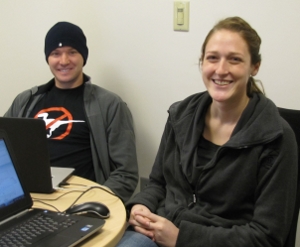 Gabriela Hamerlinck (Biology, Univ. Iowa) and
Nathan Lemoine (Biology, Florida International Univ.)
Gabriela Hamerlinck (Biology, Univ. Iowa) and
Nathan Lemoine (Biology, Florida International Univ.)
Project Title: Modeling the roles of morphology and natal habitat in parasitoid host shifts
Gabriela Hamerlinck (right) and Nathan Lemoine (left) are collaborating on a project to develop and parameterize models of parasitoid host shifts.
Visit dates: January 14-19, 2014
*Self-supported NIMBioS visitor
Visitors work on-site at NIMBioS and may link the visit with a Working Group or other activity at NIMBioS. Visitors receive reimbursement for travel and housing expenses as well as a per diem.
Applications can include any type of interdisciplinary synthesis project, but NIMBioS particularly welcomes collaborative projects. Such collaborations might involve NIMBioS resident researchers or staff or local researchers; joint applications from two or more researchers to spend time together at NIMBioS; or applications from participants in other NIMBioS activities to work on their project with NIMBioS computational science staff.
Applications are considered four times a year, with deadlines on March 1, June 1, September 1, and December 1. Applications are evaluated in terms of both the scientific value of the project and the qualifications of the applicant. Particular priority is given to students and junior researchers.
For more information about short-term visits and how to apply, click here.
NIMBioS
1122 Volunteer Blvd., Suite 106
University of Tennessee
Knoxville,
TN 37996-3410
PH: (865) 974-9334
FAX: (865) 974-9461
Contact NIMBioS

